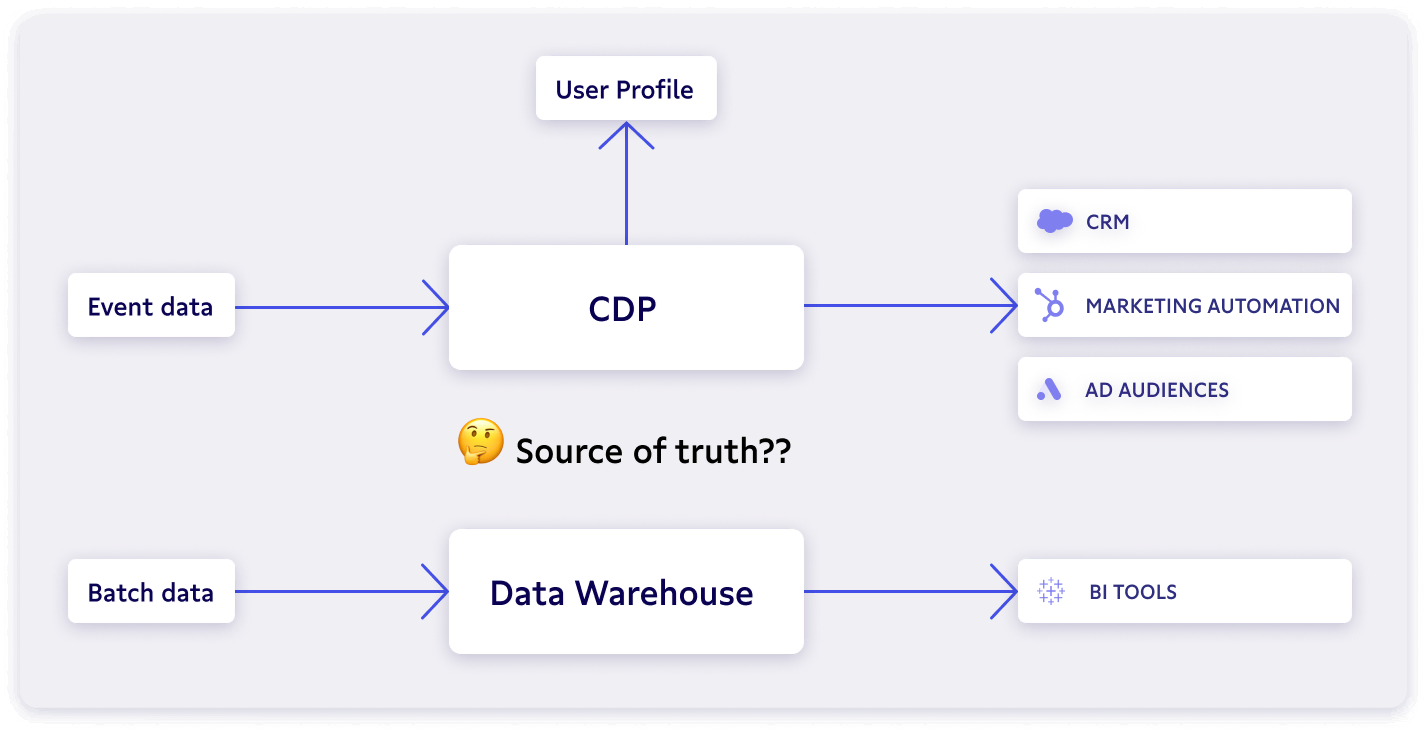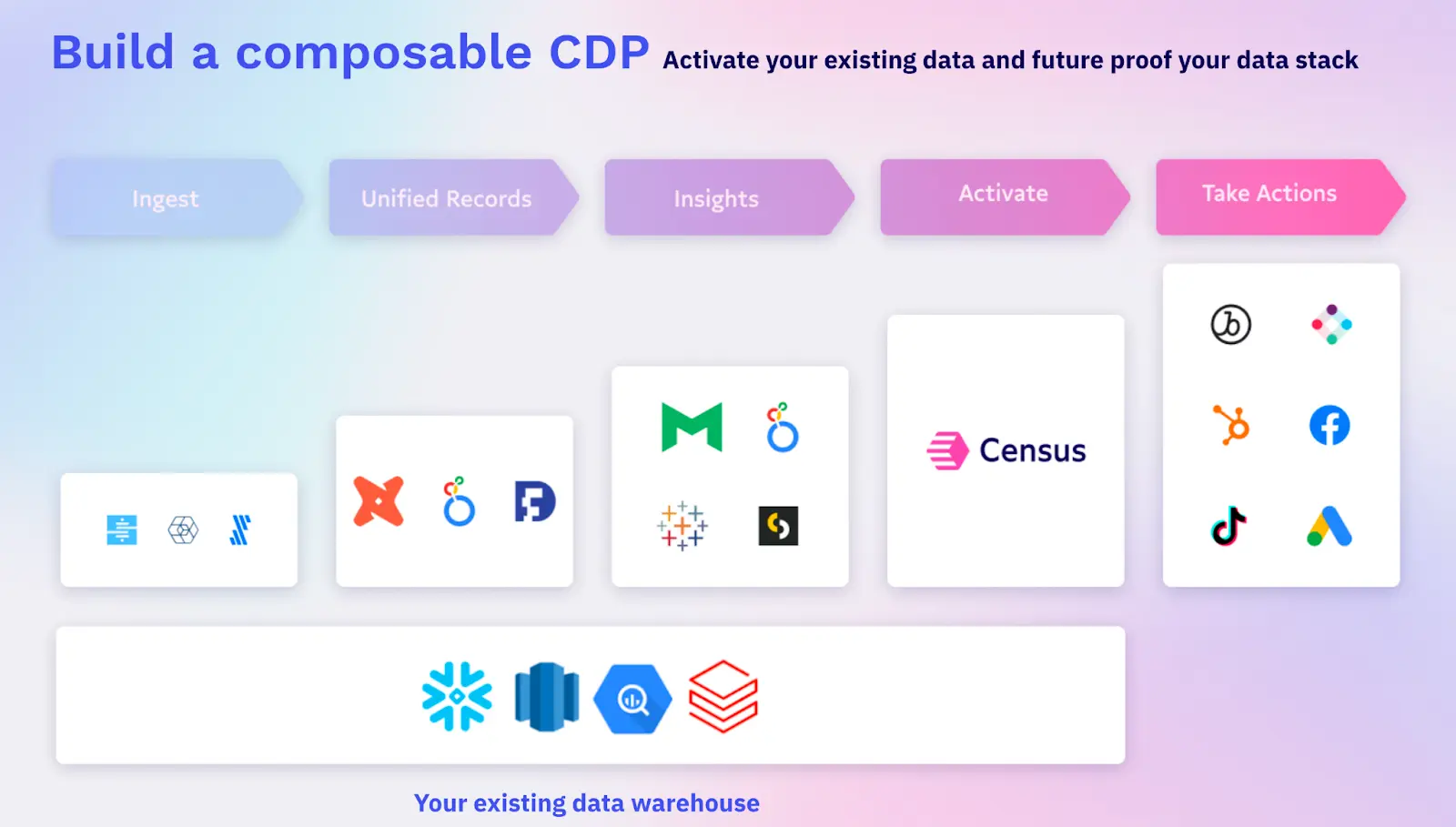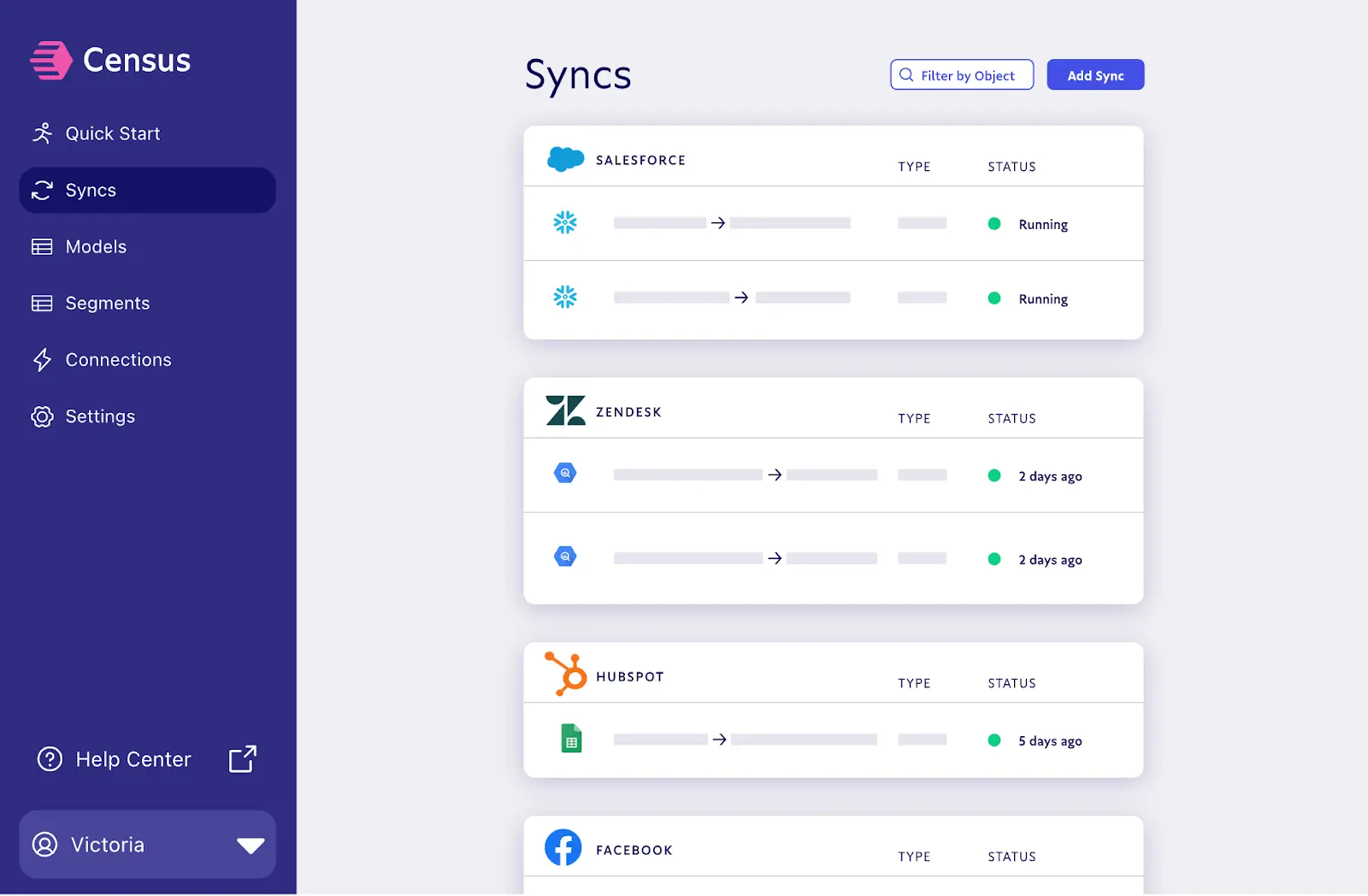Welcome to the showdown of the decade, folks!
In one corner, we have the customer data platform (CDP), claiming to be the ultimate tool for organizing and managing customer data. And in the other corner, we have the relative newcomer, Reverse ETL, the fresh face powering Data Activation in moving customer data from your data warehouse to your desired tools.
Who will come out on top in this epic battle of data management? 🥊 Let's find out! 🔔
Round 1: The CDP at work
Marketing copy for CDPs regularly claims they offer a single source of truth, but in reality, all they offer is headaches.
Due to their rigid data models, long onboarding times, and redundancies across analytics and marketing tools, only 1% of companies believe CDPs are actually meeting their current and future needs. 😬
However, the biggest problem with CDPs is that they don't (and can't) store the breadth of customer and company-level information your data warehouse does. Only the data warehouse holds the complete information needed to power your analytics.
In fact, CDPs copy the data they've collected to the data warehouse to be used in analytics, diminishing their claim as a "single source of truth." Some CDPs have started to import data from the data warehouse to bolster their claim, but doing so results in data latency and only papers over the fact that the CDP is yet another silo of data, not a credible source of truth. With this fragmentation, you simply can't trust the data inside the CDP to be as credible or fresh as in the data warehouse.

In many ways, CDPs were a stopgap in the journey of centralizing and activating customer data and were most useful in the times before cloud data warehouses became common. Now, they are lumbering dinosaurs with low flexibility in their data models, less effective data governance, and a high risk of vendor lock-in.
Round 2: The more nimble Reverse ETL
In the ten years or so that CDPs have been around, the face of the data space has changed enormously.
Like most companies today, you’re probably loading your data into data warehouses like Snowflake or BigQuery and transforming it with tools like dbt. In that case, you already have many of the components of a CDP inside your stack. All that's missing is Reverse ETL to move that data from the warehouse to the desired tools and start your data activation journey off on the right foot.
Data teams can add this layer of Data Activation by using a platform powered by Reverse ETL, like Census. Census is designed for both data and business teams, offering unique features like robust version control, logging, and observability for data teams and a visual segmentation interface for business users.
This alternative approach of transforming your existing data platform into a CDP is known as a composable CDP. Rather than rely on a single platform to do everything well, you compose multiple “best of breed” applications (e.g. data collection, data transformation, data activation) that use your data warehouse as the source of truth for customer data and activate data where it already lives.

While a CDP acts as a middleman, collecting customer data from various sources for processing and activation with other tools (creating yet another data silo), a composable CDP powered by Reverse ETL nimbly and efficiently loads business data directly from its source (your data warehouse) into applications.
Knockout Round: Reverse ETL vs. CDP
The intention behind a CDP – to use data to create a clearer picture of who customers are – is still as relevant as ever. But, as a product, CDPs are quickly becoming irrelevant.
They may have initially gained popularity by marketing themselves as an all-in-one solution to collect, unify, and activate customer data. But let's be honest: They aren’t solving anything. 😵
Now, with the rise of the modern data stack and Data Activation platforms powered by Reverse ETL, like Census, companies can access best-in-class solutions for each component of an off-the-shelf CDP and build a composable CDP more cost-effectively and with much more flexibility than traditional CDPs.
So there you have it. A hard-fought battle, but in the end, Reverse ETL has emerged victorious as the ultimate solution for managing and activating customer data. 👑

💡 Learn more about how Census can help you activate your customer data where it already lives — the data warehouse. Book a demo with one of our product specialists to learn how we can help you build granular segments and sync customer data to all of your marketing and advertising tools, without any code. 💪

















